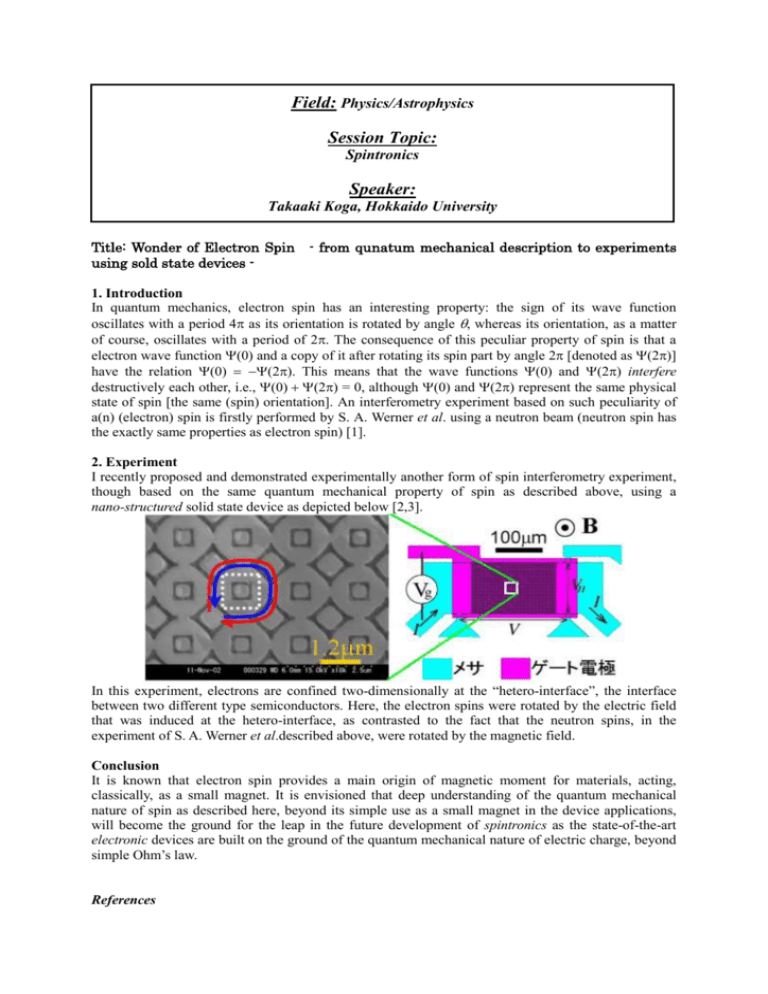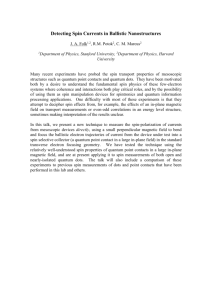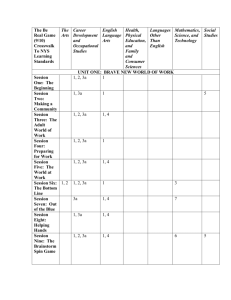Abstract
advertisement

Field: Physics/Astrophysics Session Topic: Spintronics Speaker: Takaaki Koga, Hokkaido University Title: Wonder of Electron Spin using sold state devices - - from qunatum mechanical description to experiments 1. Introduction In quantum mechanics, electron spin has an interesting property: the sign of its wave function oscillates with a period 4 as its orientation is rotated by angle , whereas its orientation, as a matter of course, oscillates with a period of 2. The consequence of this peculiar property of spin is that a electron wave function and a copy of it after rotating its spin part by angle 2 [denoted as (2)] have the relation (2). This means that the wave functions and (2) interfere destructively each other, i.e., (2) = 0, although and (2) represent the same physical state of spin [the same (spin) orientation]. An interferometry experiment based on such peculiarity of a(n) (electron) spin is firstly performed by S. A. Werner et al. using a neutron beam (neutron spin has the exactly same properties as electron spin) [1]. 2. Experiment I recently proposed and demonstrated experimentally another form of spin interferometry experiment, though based on the same quantum mechanical property of spin as described above, using a nano-structured solid state device as depicted below [2,3]. In this experiment, electrons are confined two-dimensionally at the “hetero-interface”, the interface between two different type semiconductors. Here, the electron spins were rotated by the electric field that was induced at the hetero-interface, as contrasted to the fact that the neutron spins, in the experiment of S. A. Werner et al.described above, were rotated by the magnetic field. Conclusion It is known that electron spin provides a main origin of magnetic moment for materials, acting, classically, as a small magnet. It is envisioned that deep understanding of the quantum mechanical nature of spin as described here, beyond its simple use as a small magnet in the device applications, will become the ground for the leap in the future development of spintronics as the state-of-the-art electronic devices are built on the ground of the quantum mechanical nature of electric charge, beyond simple Ohm’s law. References [1] S. A. Werner, R. Colella, A. W. Overhauser and C. F. Eagen, “Observation of the Phase Shift of a Neutron Due to Precession in a Magnetic Field”, Phys. Rev. Lett. 35, 1053–1055 (1975). [2] T. Koga, J. Nitta and M. van Veenhuizen, “Ballistic spin interferometer using the Rashba effect”, Phys. Rev. B 70, 161302 (2004). [3] T. Koga, Y. Sekine and J. Nitta, “Experimental realization of a ballistic spin interferometer based on the Rashba effect using a nanolithographically defined square loop array”, Phys. Rev. B 74, 041302 (2006).








